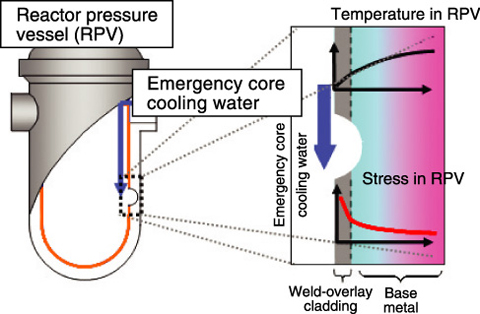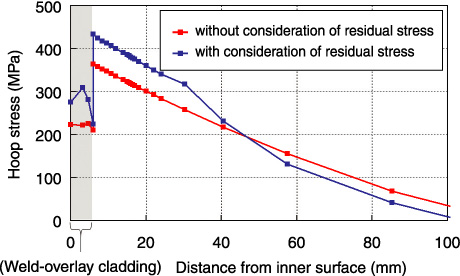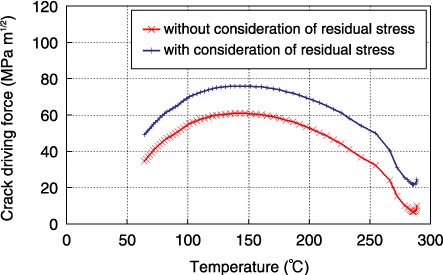
Fig.6-10 RPV pressurized thermal shock event of RPV

Fig.6-11 Hoop direction stress with or without consideration of residual stress due to overlay welding during PTS

Fig.6-12 Comparison of crack driving force
For the safe operation of nuclear power plants, whatever may happen, the structural integrity of the reactor pressure vessels (RPVs) must be maintained. Therefore, it is necessary to assure the structural integrity of the RPV while taking into account the possible degradation of its materials. Pressurized thermal shock (PTS) is one of the most severe events in assessing the structural integrity of RPVs in a pressurized water reactor (Fig.6-10). A PTS event generates high tensile stress in the inside of the RPV wall. In order to protect the RPV walls against corrosion, stainless steel is overlay-welded as cladding on the inner surface of the RPV exposed to coolant. Residual stress will be generated in the vessel wall near the cladding due to this weld-overlay cladding and this may affect assessment of the structural integrity of the RPV. Because cladding is not structural material, treatment of the residual stress has not been provided in the current domestic assessment method of the structural integrity of RPVs.
Numerical simulations by thermal-elastic-plastic-creep finite element analysis have been performed to evaluate residual stress distributions near the cladding. The analysis results reveal that the weld-overlay cladding produced tensile stress comparable to the yield stress of stainless steel in the cladding. Next, stress analyses during PTS events were performed. The analysis results showed that the stress in the inner surface of RPVs with consideration of weld residual stress was higher than the stress without consideration of residual stress (Fig.6-11). The effect of the residual stress on crack driving force was assessed based on fracture mechanics that assumed the existence of a crack on the inner surface of the RPV during a PTS event. The result indicates that the crack driving force with residual stress may become higher depending on the kind of PTS event than that without residual stress (Fig.6-12).
In the current structural integrity assessment method, safety factors and/or margins are used in order to consider uncertainties such as residual stress that might influence structural integrity. The accuracy of structural integrity assessment can be improved by considering the residual stress due to weld-overlay cladding.